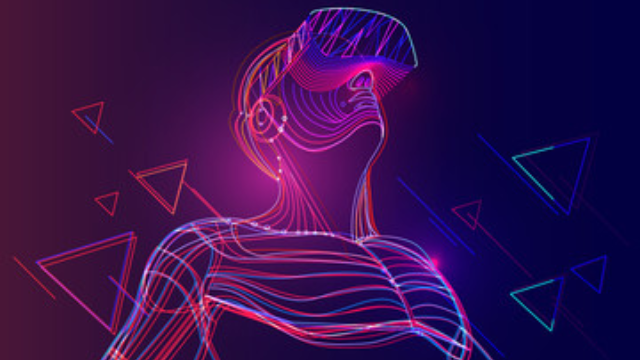Do you ever wonder how virtual reality works? Get ready to dive into the fascinating world of VR technology. With headsets as your gateway, you’ll experience lifelike virtual worlds that react to your every move. Using advanced tracking technology, your movements become part of the immersive experience. Realistic graphics, spatial sound, and interactive controllers further enhance the virtual reality journey. From gaming to education, VR offers a wide range of experiences. Discover the challenges and future developments that push the boundaries of this groundbreaking technology.
Headsets: the Gateway to Virtual Reality
To experience virtual reality, you need a headset. Headset technology is the key component that brings the immersive world of virtual reality gaming to life. These devices are designed to fit comfortably on your head and cover your eyes, allowing you to be fully immersed in a virtual environment.
Virtual reality headsets consist of several essential components that work together to create a realistic and interactive experience. The most important element is the display, which is divided into two screens, one for each eye. These screens have a high resolution and refresh rate to ensure a sharp and smooth image.
Another crucial aspect of headset technology is the tracking system. This system uses sensors to detect your head movements and translates them into virtual reality. This allows you to look around and interact with the virtual world as if you were actually there.
Furthermore, the headset is equipped with built-in headphones or audio output, which provides spatial audio to enhance the immersive experience. Some advanced headsets also offer haptic feedback, which simulates touch sensations through vibrations.
Tracking Technology: Bringing Your Movements to Life
Tracking technology is the key to bringing your movements to life in the virtual world. Using real-time movement tracking, virtual reality systems are able to accurately capture and replicate your every motion. This allows for immersive interactive experiences where your actions directly influence the virtual environment around you. From walking and running to grabbing and throwing objects, tracking technology enables a level of realism and engagement that makes virtual reality truly come alive.
Real-Time Movement Tracking
When using virtual reality, you can experience real-time movement tracking, which brings your movements to life. Real-time movement tracking is made possible through the use of motion capture technology. This technology allows the virtual reality system to track your real-time position and movements, accurately replicating them in the virtual environment. The process involves placing sensors or markers on various parts of your body, such as your head, hands, and feet. These sensors capture your movements and transmit the data to the virtual reality system, which then translates it into corresponding movements within the virtual environment. This allows for a seamless and immersive experience, where your every movement is mirrored and translated into the virtual world in real-time. Real-time movement tracking is a crucial component of virtual reality, as it enhances the sense of presence and allows for more interactive and realistic experiences.
Immersive Interactive Experiences
As you move within the virtual environment, the tracking technology brings your every movement to life, creating immersive and interactive experiences. This technology allows you to fully engage with the virtual world by accurately tracking your head movements, hand gestures, and even body positioning. Through the use of sensors and cameras, the system captures your movements in real-time and translates them into the virtual space. This level of tracking precision is crucial for immersive gaming experiences, where your actions directly impact the virtual world and enhance your sense of presence. Additionally, tracking technology plays a vital role in educational simulations, allowing learners to interact with virtual objects and environments in a natural and intuitive manner. By accurately replicating your movements, tracking technology ultimately enhances the immersive and interactive nature of virtual reality experiences.
Graphics and Rendering: Creating Realistic Virtual Worlds
To create realistic virtual worlds in virtual reality, you need to employ advanced graphics and rendering techniques. Graphics processing plays a crucial role in creating visually immersive and realistic experiences in virtual reality technology.
Virtual reality relies heavily on graphics processing to render high-resolution images and videos in real time. The graphics processing unit (GPU) is responsible for performing complex calculations and rendering tasks to generate the visuals displayed in the virtual environment. It processes data and instructions from the virtual reality system to create a seamless and immersive experience.
Rendering is the process of generating images, videos, or animations from a 3D scene. In virtual reality, rendering involves creating realistic and accurate representations of virtual objects, environments, and interactions. This is achieved through various techniques such as shading, texturing, lighting, and shadowing, which simulate real-world visual effects.
Real-time rendering is particularly important in virtual reality to ensure a smooth and responsive experience. The GPU must be capable of rendering images at a high frame rate to prevent motion sickness and provide a sense of presence in the virtual environment.
Audio and Spatial Sound: Enhancing the Immersive Experience
To enhance the immersive experience in virtual reality (VR), audio and spatial sound play a crucial role. Surround sound in VR allows for a more realistic and immersive audio experience by creating a three-dimensional sound environment. This is achieved through the use of multiple speakers or headphones strategically placed around the user, providing a sense of direction and depth to the sound. Additionally, 3D audio effects further enhance the realism by simulating sound sources moving in relation to the user’s position, creating a more dynamic and lifelike auditory experience.
Surround Sound in VR
When you put on a virtual reality headset, the surround sound transports you to a whole new world, immersing you in a realistic audio experience. Virtual reality audio is designed to enhance the immersive nature of VR by providing 3D audio effects that accurately replicate how sounds would be heard in the real world. This is achieved through the use of spatial sound technologies that take into account factors such as distance, direction, and occlusion. By simulating the way sound waves interact with the environment and the listener’s ears, VR audio creates a sense of presence and depth, making the virtual world feel more lifelike. To better understand the concept, take a look at the table below:
| Sound Effect | Description |
|---|---|
| Distance | Sounds become fainter as they move further away, just like in reality. |
| Direction | Sounds can be positioned accurately in a 360-degree space, creating a sense of directionality. |
| Occlusion | Sounds can be blocked or muffled by virtual objects, adding realism to the audio experience. |
3D Audio Effects
Enhance your virtual reality experience with immersive 3D audio effects and spatial sound technologies. In virtual reality (VR), 3D audio effects are crucial for creating a realistic and immersive environment. By simulating sound from different directions, distances, and angles, VR audio enhances the sense of presence and immersion. Spatial sound technologies play a vital role in achieving this effect by accurately reproducing sound in a three-dimensional space. These technologies utilize advanced algorithms and techniques to determine the position, movement, and distance of virtual sound sources in relation to the user’s position. By accurately rendering the audio in real-time, spatial sound enhances the overall immersive experience, making it feel more lifelike and engaging. Whether it’s the sound of footsteps behind you or the echo of your voice in a virtual room, 3D audio effects and spatial sound technologies greatly contribute to the realism and immersion of virtual reality.
Controllers and Input Devices: Interacting With the Virtual World
To interact with the virtual world in virtual reality, you use controllers and input devices that allow you to manipulate and navigate the virtual environment. These controllers and input devices provide a more immersive experience by enabling you to interact with the virtual objects and environments in a natural and intuitive way. Here are some key interacting techniques and features of these devices:
- Motion Tracking: Controllers and input devices use motion tracking technology to detect your hand movements and translate them into actions in the virtual world. This allows you to grab, move, and manipulate virtual objects with precision and accuracy.
- Haptic Feedback: Some controllers are equipped with haptic feedback, which provides tactile sensations to enhance your sense of touch in the virtual world. This can include vibrations, textures, and even resistance, making the virtual objects feel more realistic and tangible.
- Buttons and Triggers: Controllers often have buttons and triggers that can be used to perform specific actions, such as shooting a virtual gun or opening a menu. These buttons and triggers provide additional input options and enhance the overall control and interaction with the virtual world.
- Gesture Recognition: Some controllers and input devices incorporate gesture recognition technology, allowing you to use hand gestures to interact with the virtual environment. This can include gestures like pointing, waving, or thumbs-up, providing a more intuitive and natural way of interacting with the virtual world.
With the help of these controllers and input devices, virtual reality allows you to fully immerse yourself in the virtual world and interact with it in ways that were previously only possible in your imagination.
VR Content and Applications: Exploring a Wide Range of Experiences
Explore a wide range of experiences through VR content and applications. Virtual reality offers a multitude of possibilities for both entertainment and practical applications. One of the key aspects of VR is the creation of immersive content that can transport users to different worlds and scenarios. VR content creation involves the use of specialized software and tools to design and develop virtual environments, objects, and characters. This process requires a combination of artistic and technical skills to ensure a seamless and realistic experience.
Virtual reality gaming is one of the most popular applications of VR technology. With the ability to create fully immersive and interactive environments, VR gaming takes the gaming experience to a whole new level. Players can physically move around and interact with virtual objects, providing a sense of presence and realism that traditional gaming cannot match. From action-packed adventures to realistic simulations, VR gaming offers a wide range of experiences that cater to different interests and preferences.
To further illustrate the diverse applications of VR, consider the following table:
| Application | Description | Example |
|---|---|---|
| Entertainment | VR content designed for entertainment purposes, such as gaming, movies, and virtual tours. | Virtual reality game that allows players to explore a fantasy world and complete quests. |
| Training and Education | VR content created to simulate real-life scenarios for training and educational purposes. | Medical simulation that allows students to practice surgical procedures in a virtual environment. |
| Virtual Meetings and Collaboration | VR applications that enable remote teams to meet and work together in a shared virtual space. | Virtual conference room where participants can interact and collaborate on projects in real-time. |
Challenges and Future Developments: Pushing the Boundaries of VR Technology
One major challenge in pushing the boundaries of VR technology is ensuring compatibility with a wide range of devices and platforms. As VR continues to evolve, developers are faced with the task of creating experiences that can be seamlessly accessed across various devices such as PCs, gaming consoles, smartphones, and standalone headsets. Overcoming this challenge is crucial for the future advancements of VR technology.
In order to push the boundaries of VR technology, several technological limitations need to be addressed. These include:
- Resolution: Enhancing the visual quality of VR experiences by increasing the resolution of displays is essential for a more immersive and realistic experience.
- Processing Power: Advancements in processing power are necessary to handle the complex calculations required for rendering high-resolution graphics and maintaining smooth frame rates.
- Wireless Connectivity: The development of wireless VR systems will eliminate the need for cumbersome cables and allow for greater freedom of movement.
- Haptic Feedback: The ability to simulate realistic touch sensations in VR experiences can greatly enhance immersion and make interactions more engaging.



